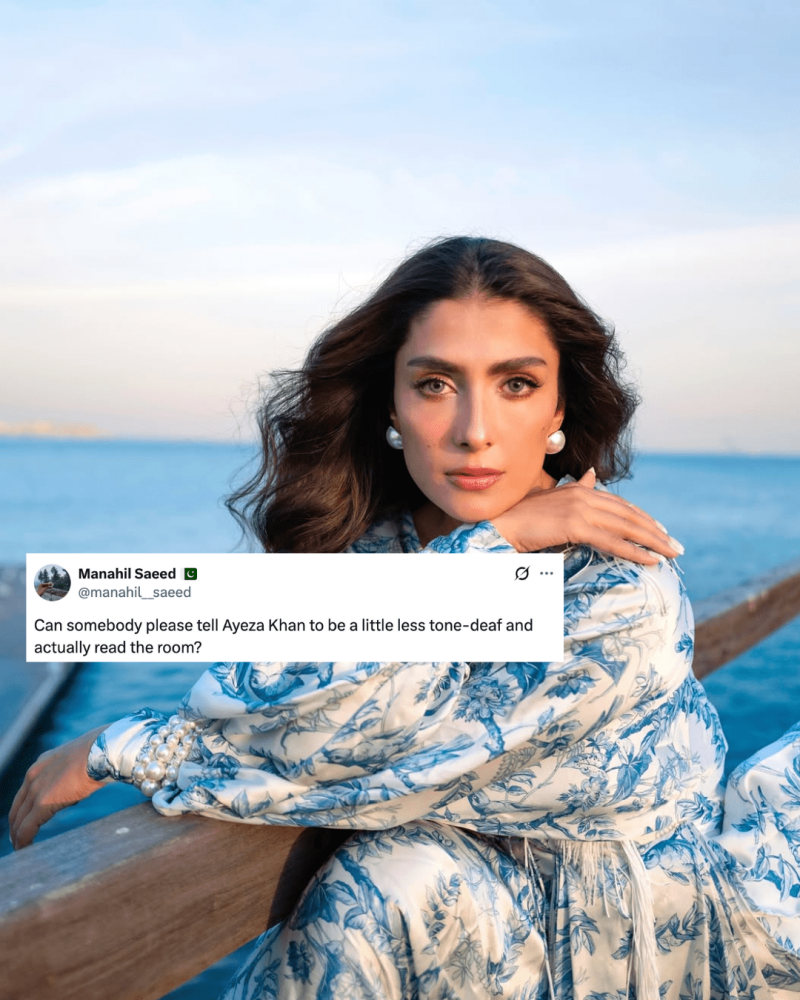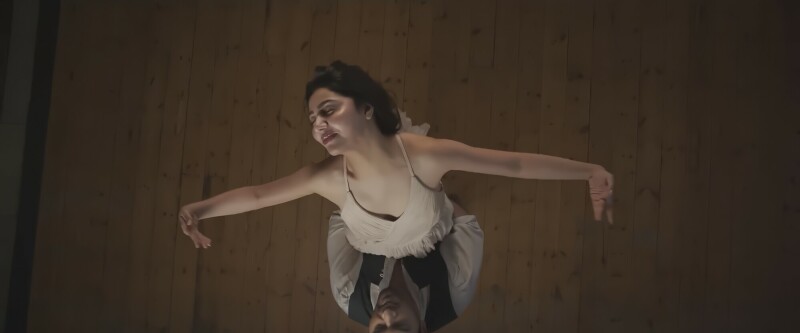Asaduu is the indie-pop newbie you may not have heard of — yet
Pakistan’s music industry is slowly but steadily growing. From the luscious fields of Punjab to the vibrant lands of Sindh, singers from every corner of the country are taking Pakistan by storm.
While platforms such as Coke Studio and Velo Sound Station provide space for up-and-coming artists, these opportunities are few and far in between for smaller, less connected artists. One such voice, emerging from Karachi, is that of singer-songwriter Asaduu.
From the streets of Karachi
Asad Shabir, who goes by his stage name Asaduu, traces his journey back to Quetta, where he spent his early years before relocating to Karachi for three years. Eventually, he returned to Quetta to complete his schooling, experiencing the unique blend of urban and mountainous lifestyles.
After completing his schooling, he pursued his passion for the arts by attending the National College of Arts (NCA) Pindi campus, where he refined his craft. He lived in Islamabad for five to six years before permanently moving to Karachi, where he has been based for the past three years.

A harmony of pop, punk, and indie
His music, a blend of music that sounds midway between Mehdi Maloof and Hasan Raheem, has a rather mellow vibe, complemented by relatable lyrics, making it ideal for unwinding after an exhausting day. If you want to talk genre, it blends pop with elements of punk and indie, creating a unique sound.
Asaduu took Images on a deep dive into his creative process, beginning at the start, during the Covid-19 pandemic, when he began writing songs as a hobby. He had free time aplenty and found himself immersed in songwriting, eventually accumulating a significant collection of original compositions.
Motivated by this newfound creative outlet, he “wanted to produce an extended play (EP) for him and his friends”.
Greatly shaped by pop music and its focus on emotions in songwriting, he cited American singer-songwriter Conan Gray as a major inspiration, noting Gray’s ability to infuse personal experiences into his music.
Like Gray, Asaduu not only writes about his own emotions but also about his friends’ experiences. “Half of my songs are about how my friends have felt in relationships,” he noted.
“Recently, Pakistani and Indian indie and pop scenes, especially after Covid-19, have gained immense popularity because of Instagram and TikTok,” he explained. Artists like Abdul Hannan, Annural Khalid and Hasan Raheem also “blew up” during this time.
Seeing that trend — regardless of whether or not the artists were well-known — motivated him to pursue music.
Delving into his writing process, he shared that though it is a little difficult for him to write his songs in Urdu, writing them in Balochi is even more challenging. “Rhyming in Balochi is very difficult compared to Urdu. If I ever write in Balochi I would have to consult a fluent speaker.”
Asaduu explained that his Balochi vernacular incorporates a significant amount of slang words. “In Urdu, when one uses slang, it’s fun.” However, if he were to use that slang in Balochi, he’d likely be “mocked” by native Balochi speakers for not speaking the language properly in his music, he added.
A song of home, heart and belonging
The artist reflected on his unique experiences and how they have shaped his music. “My experiences growing up have been very different from most. ‘Ghar Aja’ is about growing up in Quetta, then moving to Karachi, then moving to Islamabad. It is about never belonging to one place,” he shared.
He highlighted the personal significance of the song, explaining that while it’s rooted in his connection to Balochistan, its themes can resonate with anyone who has felt a sense of displacement.
“On a personal level, that song for me is about Balochistan but it could also be about a person,” he explained.

Transitioning to Karachi brought about a shift in his creative focus, with Asaduu finding himself drawn to themes of the sea and ocean. Earlier, he focused more on mountains, given his background. “The first time I saw a beach was in Karachi. That’s why I associate the ocean with this city.”
The struggle for time on stage
The challenges faced by new artists breaking into the music scene are plenty. Asaduu highlighted how difficult it is to get opportunities to perform and collaborate with other artists. “I would say one of the biggest challenges I face as a new artist is finding gigs. It’s very hard to find spaces in Karachi to perform,” he lamented.

Another drawback is the scarcity of producers in Karachi compared to Lahore, making collaborations a daunting task. “Finding the right people to work with is hard,” he admitted, explaining the challenges of navigating the industry as a newcomer with limited connections.
“Since you don’t know that many people, you don’t know how to collaborate with good producers that can produce your songs,” he explained.
A visual heartbreak
Despite these hurdles, Asaduu remains focused on his artistic journey, with four of the seven songs from his upcoming debut EP, Heart Shaped Red Flags, already released on YouTube and Spotify, accompanied by music videos that collectively create a cohesive narrative.
Expounding on the meaning behind the title of his album, Asaduu explained, “When you’re falling in love with someone, you can’t see the red flags. But if you do see them, they are heart-shaped. You justify them in whatever way. Even after breaking up, you somewhat still justify their actions.”
He emphasised the visual aspect of the album, likening it to a representation of the blindness one experiences in love. “The entire album is about how visually impaired you are [in love]. This is why this is a visual album. It is a representation of how blind you are in love.”
Going into the thematic structure of his album, which revolves around the seven stages of heartbreak, he said, “So there is grief, anger, bargaining, closure and all of that”. “Every track and its video represent the process of heartbreak. How you go through it and like how finally you get closure again.”

He outlines the progression of emotions through the tracks, starting with the shock and denial portrayed in ‘Thank you, Asaduu’, followed by the pain and guilt explored in ‘Ek Iltija’. The subsequent songs delve into emotions of anger and bargaining in ‘F***ing same’, and depression in ‘Ghar Aaja’. ‘Shades of Pink’ illustrates reconstruction and working through, ‘Butterknife’ signifies an upward turn, and ‘Behtareen pt.I’ culminates the journey with themes of acceptance and hope.
The inspiration for creating a visual album for his debut stemmed from Asaduu’s early involvement in producing a music video for another artist, even before he embarked on his own musical journey.
“I wanted people to see that [making a visual album] is doable,” he explained.
The singer pointed out the culture of releasing singles in Pakistan, where each song is accompanied by a standalone music video, lacking a cohesive connection between them.
While acknowledging that visual albums are not entirely new in the global music scene, Asaduu highlighted their rarity in Pakistan. “I wouldn’t say [visual albums] are new, because artists have done it before. But not commonly in Pakistan. The culture in Pakistan is of single releases and if you’re famous enough then you release an album,” he remarked.
“And no, Beyoncé did not inspire me,” the singer added playfully.
DIY music production
While visual albums sound great on paper, in reality, they cost a lot of money, resources and time.
Asaduu faces challenges in finding actors for his music videos due to his self-financed productions. That’s why he prefers collaborating with friends and acquaintances.
“It’s easier to work with them because there are creative differences and whatnot with other people involved. It is difficult to find people with a similar aesthetic sense,” he explained.
Despite financial constraints, Asaduu strives to maintain his creative vision, albeit with some compromises. He described his music videos as “student-friendly,” shaped by the resources at his disposal. “It’s just like something you’d see and be like, ‘Oh, I can make this’,” he explained.

Asaduu wears many hats — he not only creates music but also takes on the role of editing his own music videos, a process he finds particularly fulfilling. “I love editing. It is the best part. Because your vision is like coming together and you see it, you feel it. You can edit it however you want,” he said.
After collaborating with editors in the past, he finds the process more streamlined when he handles it himself, emphasising the importance of maintaining his creative vision throughout the editing process. This sentiment extends to his involvement in shooting and directing his music videos as well.
His five to nine after his nine to five
Wearing multiple — or in his case, all of the — hats presents its own set of challenges, especially considering Asaduu’s 9 to 5 job as a designer. “I don’t have a timeline, since I have a full-time job, I have to sacrifice my weekend and if it doesn’t get done in two days then it keeps on getting extended,” he explained.
Music has yet to generate income for him — enough to do it full time. Right now, in order to continue creating music, he requires financial stability, something he can only get with a regular job. That regular job, in turn, eats into time that he could be using to make music. This conflicting commitment makes it challenging to maintain consistent productivity in his music.
“You need to have a 9 to 5; you can’t solely depend on music for income,” he said. “There’s a threshold of streams [on streaming platforms] before you start seeing returns. Initially, there’s little to no money,” the artist explained, debunking the common misconception that having your song on Spotify alone ensures a steady stream of income coming in.

“You keep investing until you gain some level of popularity, and then income starts flowing from the streams.”
Spotify struggles
Another area where he faces hurdles is in promotions. “Without a label or company, exposure is limited. As an independent artist, you’re responsible for funding everything — music videos, production, everything,” Asaduu pointed out. And that “everything” costs a lot of money.
He detailed the process: “To promote music, I use a website called DistroKid, which distributes it to various platforms for an annual fee. Then I would pitch my song to Spotify, and it’s pure luck if it lands on a Spotify playlist.
“If your song does make it onto a playlist, it becomes much more visible to the public,” he said. But that visibility depends largely on luck unless, of course, you’re already well-known.
Despite being on Spotify, his songs have yet to be selected for a playlist.

Taking it one listener at a time
Despite all these challenges, Asaduu’s motivation to continue making music stems from its ability to evoke emotions in people. “I listen to music and I know how one song can make me feel a certain way, make me relive a certain moment.
“I think if I put out music, one can think ‘oh, this is my song’ or ‘this is our song’,” the singer said. “This reminds me of that time.
“Even if just one person likes or relates to my music, it fuels my desire to keep going.”
Asaduu has a lot of dreams when it comes to his music — he dreams of signing with a music label one day, he hopes to produce an album that he can promote the way he wants, unrestricted by financial restraints.
“I don’t want to be a big artist, I want to be an artist people can relate to. Once the music is out, it belongs to the listeners, it’s theirs to understand.”
Asasduu’s debut EP Heart Shaped Red Flag is set for release this August. You can listen to his music here.
All photos are provided by Asaduu















Comments